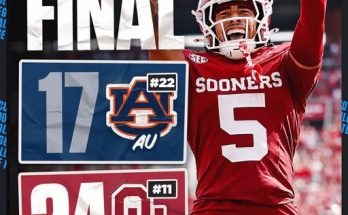“SWEET MEMORIES FROM THE SUGAR SHACK: Bob Seger, Punch Andrews, and a Lifelong Friendship Born at Ohio State in 1965”
It was 1965, the middle of a cultural revolution. The Beatles had just released Rubber Soul, the Vietnam War was escalating, and students at Ohio State University were finding their voice through art, politics, and music. Amidst the hum of college life and vinyl records spinning in dorm rooms, two young men crossed paths at a small campus party. One was a shy but determined rock and roll singer from Michigan. The other was an astute business student with an ear for music and a head for deals. Their names: Bob Seger and Edward “Punch” Andrews. That night at a student hangout called the Sugar Shack would mark the beginning of one of rock music’s most enduring friendships.
Bob Seger wasn’t famous yet. Far from it. He was a struggling regional act playing high school dances and smoky Detroit bars with his band, the Last Heard. But his voice—gravelly, soulful, and unshakably honest—had already started turning heads. That fall, Seger was visiting a friend enrolled at Ohio State. Word spread that there would be a gathering that night at an off-campus club popular with students, musicians, and dreamers alike. The Sugar Shack wasn’t glamorous. It had mismatched chairs, a worn wooden floor, and a jukebox that favored Motown over Sinatra. But to the people who frequented it, the place was electric.
Punch Andrews was a junior at Ohio State studying business and working part-time booking local acts for campus events. Tall, sharp-eyed, and serious-minded, he had a knack for recognizing raw talent. At the Sugar Shack that evening, he noticed a young guy in a leather jacket talking animatedly about rhythm and blues with a group of musicians. That guy was Bob Seger.
According to Seger in later interviews, the two struck up a conversation that night about Sam Cooke and Little Richard. They discovered a shared love of music but also something rarer: mutual ambition. While Seger wanted to be a rock star, Andrews was less interested in fame than in building something that lasted. “He just got it,” Seger once said. “He understood what I wanted to say and how to get it to the people. I trusted him immediately.”
From that first meeting, a partnership formed. Andrews offered to help Seger book some small college gigs around Ohio, and within weeks, he was managing Seger informally. What began as a handshake agreement turned into a six-decade bond that would defy the odds in an industry littered with broken contracts and broken friendships.
By 1967, Seger had released “Heavy Music,” a regional hit that caught the attention of Capitol Records. Andrews negotiated the deal himself, ensuring Seger had creative control—an unusual clause at the time. The success was modest but foundational. Over the next few years, Seger and Andrews worked tirelessly to build a following throughout the Midwest. They booked gymnasiums, roller rinks, county fairs—anywhere people would listen. Often, they would drive through the night, Seger sleeping in the backseat while Andrews mapped out the next town.
It was during those early years that the friendship truly deepened. The two men came to rely on each other not only professionally, but personally. When Seger began to doubt himself—as he often did after low-selling albums or poor ticket sales—Andrews was the one who urged him on. And when the label wanted a more commercial sound, Andrews backed Seger’s vision every time.
Their bond was unusual. There was never a formal contract between them, not even a written agreement until much later in their careers. “It was always just a handshake,” Seger told Rolling Stone in 2006. “That’s how much I trusted him. That’s how much we respected each other.”
As the 1970s unfolded, the music caught up to the vision. Seger’s Live Bullet album in 1976 captured the energy of his live performances and introduced his blue-collar rock to a national audience. Songs like “Turn the Page” and “Travelin’ Man” became anthems not just for Midwesterners, but for anyone who knew what it meant to keep moving forward despite disappointment. And behind every tour, every release, every risky decision, was Punch Andrews.
It’s easy to romanticize friendships in the music industry, where betrayal is common and longevity rare. But Seger and Andrews never seemed to hit those walls. They argued, certainly. There were moments of tension, like when Andrews pushed Seger to release Night Moves as a single when Seger wasn’t sure it was ready. But those arguments came from a place of trust and respect. “He never let me get comfortable,” Seger said. “And that’s probably what saved me.”
The 1980s brought superstardom. Seger’s Against the Wind won two Grammys and went triple platinum. “Old Time Rock and Roll” became a generational hit, cemented forever in pop culture after its inclusion in Risky Business. Andrews negotiated licensing rights carefully, ensuring Seger maintained ownership of his work—a move that would pay off immensely in the streaming era. While other artists of the time lost control of their catalogs, Seger retained the rights to nearly all his music, thanks to Andrews’ vigilance.
Through it all, the two remained remarkably private. They rarely did joint interviews. Andrews avoided the limelight entirely. In fact, for decades, many fans didn’t even know his name. But Seger never stopped talking about him. When inducted into the Rock and Roll Hall of Fame in 2004, Seger thanked only a handful of people—his parents, his bandmates, and Punch. “There wouldn’t be a career without him,” he said during the speech. “He kept me grounded. He kept the lights on. He never let me quit.”
In the 1990s and 2000s, as many of Seger’s contemporaries faded from the charts, he and Andrews kept releasing albums, albeit at a slower pace. Each one was crafted carefully, with no regard for trends or radio formulas. Face the Promise in 2006 and Ride Out in 2014 both went platinum. Fans didn’t care that Seger wasn’t topping Billboard anymore. They came to the shows, filled arenas, and sang every lyric. That loyalty was a testament not only to Seger’s music, but to the consistency Andrews helped foster.
Over time, the story of that night at the Sugar Shack became part of Seger mythology. Fans would mention it in forums, and college alumni who remembered the club would reminisce about how the place had hosted more than just music—it had sparked a legacy. The club itself no longer stands, torn down in the late 1970s to make room for a bookstore. But its name lingers in Buckeye history, tied forever to the night two young men began a journey neither could have predicted.
In recent years, Seger has spoken more openly about aging, legacy, and the people who made his career possible. He retired from touring in 2019, following the death of longtime saxophonist Alto Reed. In interviews since, he often brings up Andrews—not just as a manager, but as a brother. “There was never a day we weren’t in sync,” he told a Detroit radio station. “And when we weren’t, we worked it out. Because that’s what you do with people you love.”
Punch Andrews still lives in Michigan, just a few miles from Seger. Though mostly retired, he continues to advise younger artists and manages Seger’s publishing catalog. The two still meet regularly—over coffee, not contracts. They reminisce about the clubs they played, the miles they drove, and yes, the night they met at Ohio State.
What makes their friendship so special isn’t just its longevity. It’s the simplicity of it. Two men who found each other at a college hangout in 1965 and never let go. In an industry built on flash and friction, Bob Seger and Punch Andrews proved that trust, loyalty, and shared values could go farther than fame.
As Seger put it during one of his final shows, “Every song I ever wrote, every mile I ever traveled, Punch was right there. We started this together. And we’ll finish it together.”
Let me know if you’d like citations or formatting changes for print or digital publishing.



